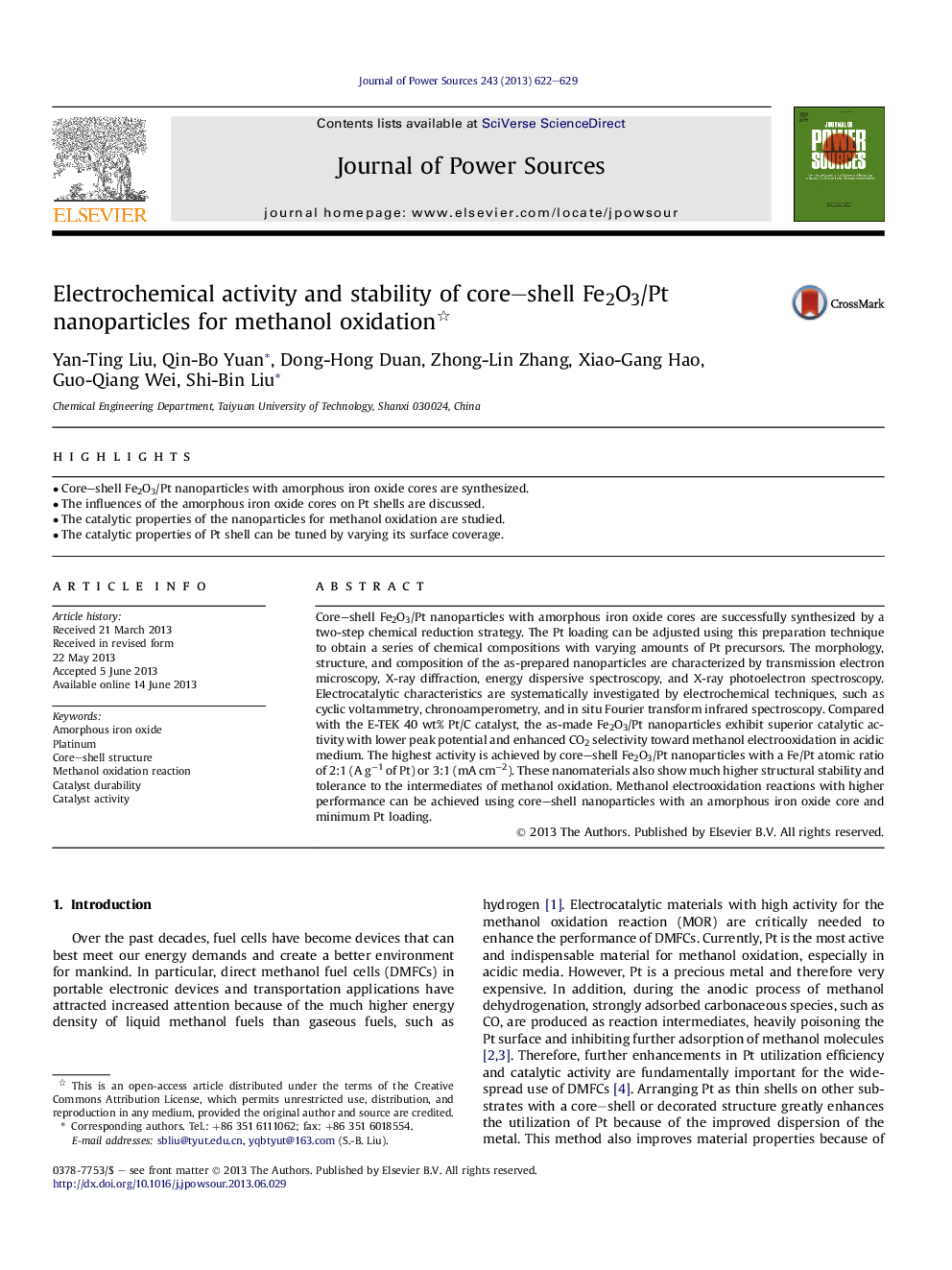| Article ID | Journal | Published Year | Pages | File Type |
|---|---|---|---|---|
| 7739555 | Journal of Power Sources | 2013 | 8 Pages |
Abstract
Core-shell Fe2O3/Pt nanoparticles with amorphous iron oxide cores are successfully synthesized by a two-step chemical reduction strategy. The Pt loading can be adjusted using this preparation technique to obtain a series of chemical compositions with varying amounts of Pt precursors. The morphology, structure, and composition of the as-prepared nanoparticles are characterized by transmission electron microscopy, X-ray diffraction, energy dispersive spectroscopy, and X-ray photoelectron spectroscopy. Electrocatalytic characteristics are systematically investigated by electrochemical techniques, such as cyclic voltammetry, chronoamperometry, and in situ Fourier transform infrared spectroscopy. Compared with the E-TEK 40 wt% Pt/C catalyst, the as-made Fe2O3/Pt nanoparticles exhibit superior catalytic activity with lower peak potential and enhanced CO2 selectivity toward methanol electrooxidation in acidic medium. The highest activity is achieved by core-shell Fe2O3/Pt nanoparticles with a Fe/Pt atomic ratio of 2:1 (A gâ1 of Pt) or 3:1 (mA cmâ2). These nanomaterials also show much higher structural stability and tolerance to the intermediates of methanol oxidation. Methanol electrooxidation reactions with higher performance can be achieved using core-shell nanoparticles with an amorphous iron oxide core and minimum Pt loading.
Keywords
Related Topics
Physical Sciences and Engineering
Chemistry
Electrochemistry
Authors
Yan-Ting Liu, Qin-Bo Yuan, Dong-Hong Duan, Zhong-Lin Zhang, Xiao-Gang Hao, Guo-Qiang Wei, Shi-Bin Liu,
